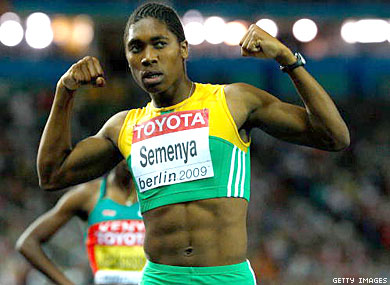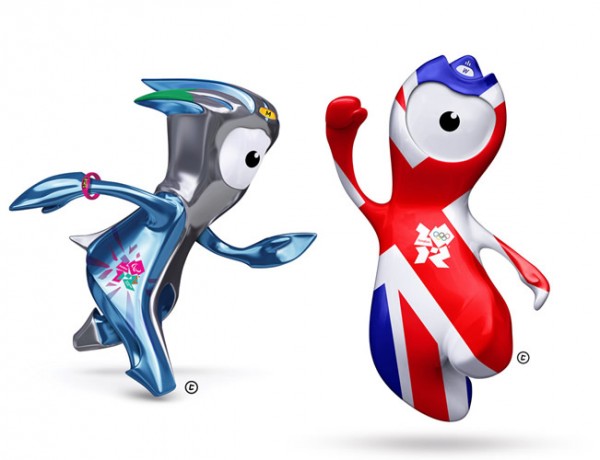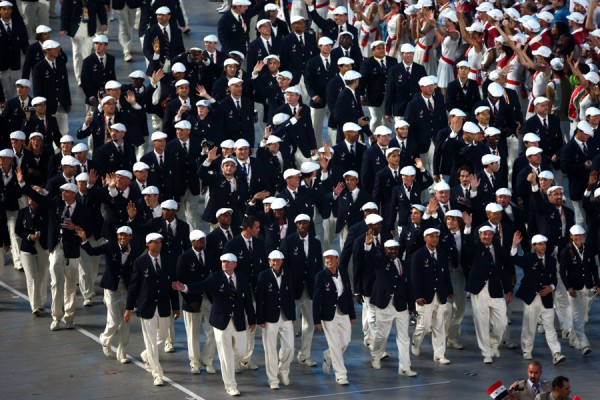The Olympics are approaching, and my mind has been wandering in eager anticipation.
Will David Beckham be shot into space at the opening ceremonies to light a lunar torch symbolizing the union of all galatic beings? Will the US team wear their made-in-China outfits? Or has Harry Reid already burned them? Will the world rejoice at the closing ceremonies with the announcement that Kate Middleton has been successfully cloned? What on earth are those eyeball mascots? Why are olympic mascots always so weird?
Failed attempts at cross-culturally appealing mascot design aside, the Olympics are basically all about art, or maybe better put, aesthetics. There’s the mass spectacle of the opening ceremonies and the fashion of the outfits. (Last time the US athletes kind of looked like a wait staff on a high end cruise ship.) There’s the beauty of the sports themselves — twisting, turning, flipping, bending, and moving through air and water at speeds that don’t even make sense — the poetry of this captured in a snippet of diving from Leni Riefensthal’s Olympia (let’s temporarily ignore the politics behind this). There’s the beauty of the actual athletes, which ESPN is not overlooking. Finally, there’s even a lot of actual art.
Some of this art has been commissioned specially for the Olympic Park and some of it is just being exhibited in venues throughout the UK to coincide with the games. I’ve spent some time scrolling through London Festival 2012: the behemoth of a website that compiles the featured events and exhibitions that hope to highlight London as the cosmopolitan capital of the art world.
Most of the big name UK artists are involved and more. Damien Hirst extends his Gagosian world tour to the Tate Modern — where Olafur Eliasson will also distribute little “suns” aka solar powered flashlights to look at art in the dark. Yinka Shonibare‘s sculpture of a life-sized ballerina encased in a giant ‘snow globe” will be displayed on the outside of the Royal Opera House. Jeremy Deller will bring his amazing looking “blow-up” stonehenge to the National Botanical Gardens in Wales. Susan Phillipsz will create “a new sound installation across multiple sites in Edinburgh.” Martin Creed hopes everyone will simultaneously ring a bell “as quickly and loudly as possible for three minutes.” Chris Ofili will be creating a setting for a new ballet at the Royal Opera House that will “respond to Titian paintings.” Ai Weiwei and Hezog & de Meuron have created a “plane” of water for the Serpentine Pavilion. Yoko Ono will create “IMAGINE PEACE,” described as a “worldwide initiative of anti-violence. This ongoing project uses the Internet, posters, thoughts, badges and a multitude of other media to communicate its message of peace to the global community.”
This list could go on and on because the “art olympics” overwhelmingly try to be just like the real olympics. According to one source, the entire London Festival “involves 25,000 artists from all 204 competing Olympic nations in 12,000 events and performances at 900 venues all over the UK.” But unlike the real olympics, artists did not go through rigorous trials to get there. (Imagine if they did??!! How exciting would be to see Damien and Yoko head to head on the track. Or Ofili vs. Deller in table tennis. Ok, maybe not too exciting, but the thought reminds me a lot of the below Monty Python skit.)
I guess the idea is that art somehow fits in with and translates the lofty olympic values of peace, harmony, and universality. Sometimes the attempts at inclusion risk sounding a little demeaning:
“Arab artists occupy an underground gallery, a magic shop and an office hub to evoke signs of change.”
“Rio artists occupy the streets, stages and squares of London in collaboration with London artists.”
Is “occupy” really the best choice of words here?
There are also what sound like pretty hokey stunts with “interactive technology:”
“WE PLAY EXPO – Handprint 2012 — Large-scale interactive projection of live handprints, controlled online and with smartphones.”
This could actually be cool, so I probably should not judge it ahead of time and my cynical sentiment does not fit the olympic spirit — just like performance enhancing drugs, women that may be men, children separated from their families to become elite athletes before they could ever make that kind of decision for themselves, and anything else that threatens to destroy the veil of purity that olympics tries so hard to superficially maintain.

Mid-distance runner, Caster Semenya will carry South Africa’s flag. Gender-test controversy kept her out of competition for nearly a year.
Of course, I wish I could go visit to see if the art is co-opted or blandly manufactured to pay lip service to illusory ideals. Or maybe like the athletes themselves, it’s refined, lean, techinically spectacular, and doing things that have never been achieved before. I am guessing it is something in between, and it will be interesting to see during the coverage how (if at all) the artistic side of the olympic machine gets represented. All I know is that I will be glued to almost every second of it.







1 comment
Deller’s Stonehenge looks AMAZING and like something I want to have everywhere I go.